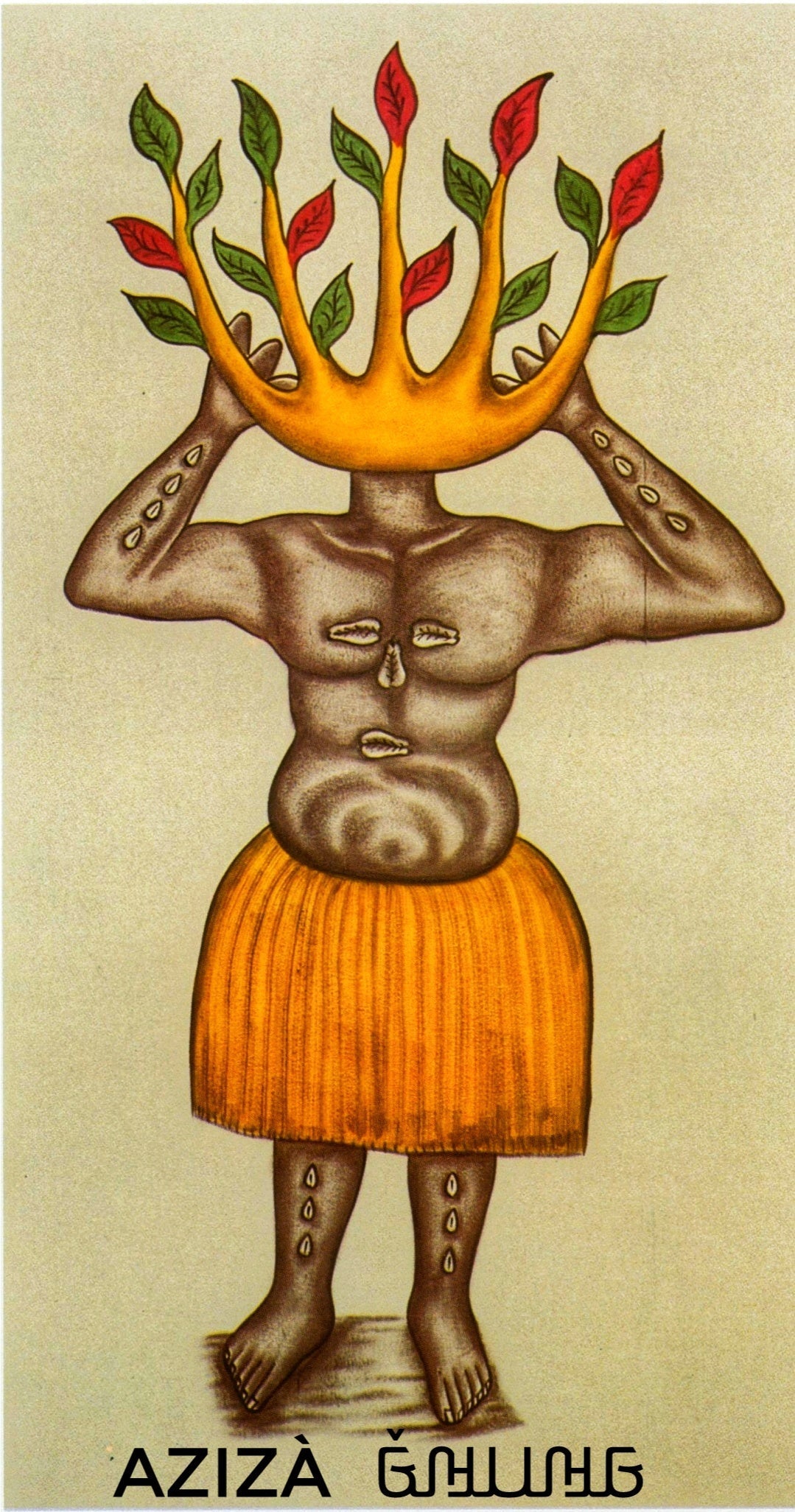
Our Spiritual Impact on Nature
Share
This human attack on the environment has great spiritual consequences. An example is seen with the forest spirits that we call Azizà in the Ajã language.
The Azizà are often referred to as the dwarf spirits. This is because the ancient lore describes the as very small people, sometimes completely covered in hair (like a masquerade), with their feet pointing backwards. The Azizà notably has feet pointing backwards allowing it to leave a backward trail of footprints this creating confusion for those trying to follow it. They are elusive and hard to see by the average person. Yet, they exist even here in North amerikkka.
There was a time when Azizà and humans worked together. If people needed to cure a disease, Azizà would help them. If people needed a mystic power, it was the Azizà who would provide it. But as people converted to Christianity the Azizà have grown to distrust us. They don't like what we're doing to the forest. They dislike the plastic that's everywhere in the zun (forest). They dislike how we kill animals of the forest for sport. They dislike how we disrespect the sacred trees of the forest. They are angry with us, and because we take too much from the forest, the Azizà are vacating their assistance to us. And they are also handing out punishment for this environmental arrogance.
There is also a direct connection between the rise of Abrahamic religions in Mãwùfɛ (Afrika) and the subsequent demonization of our indigenous lifestyle and practices with the withdrawal of azizà into the deep forest and away from where humans regularly live or venture; away from the time when we had intricate connection with them.
Azizà are of the forest. If we lose the forest, we also lose the azizà. Azizà are at once the forest in action, the forest's consciousness, and the manifestation of the forest's will. However, not all spirits are as unequivocally linked to the forest as the azizà. Like animals and plants, some of the hùn (deities) are said to live in the forest. They are born of the forest's power and embody the ontological essence of certain leaves and certain combinations of leaves with other objects such as stones, feather, and animal remains. Where azizà reflect the collective power of the forest, the hùn reflect fractions of that power that are consolidated into earthly shrines made by their human interlocutors.
They are considered to be spirits who were present before humans learned to navigate the wilderness. They are the repositories of primordial wisdom, and their existence is intertwined with the natural world they help sustain. A guardian force with intimate knowledge of the forest’s secrets, they have been assigned a role by Mãwù that transcends mere existence. They are curators of a world that is as brutal as it is beautiful.
In the sacred stories, the Azizà are often sought out by hunters looking to perfect their skills and prosper. The spirits guide them to game, whisper the wind’s secrets, and, in return, ask only for reverence towards the land. These interactions are the heartbeat of numerous myths where the Azizà act as catalysts for a hunter’s journey from mediocrity to mastery.
For spirits so entwined with nature, their limitations are but reflections of the environment they protect. They are vulnerable to the degradation of their forests, their powers waning with each tree that falls and each stream that dries up. Their benevolence also confines them. They cannot act with malevolence, even when faced with threats. Bound by their own goodness, they risk fading away should the forests—and the reverence humans hold for them—diminish. Its on us. Right now, though, the Azizà are pissed off! What are we going to do?
